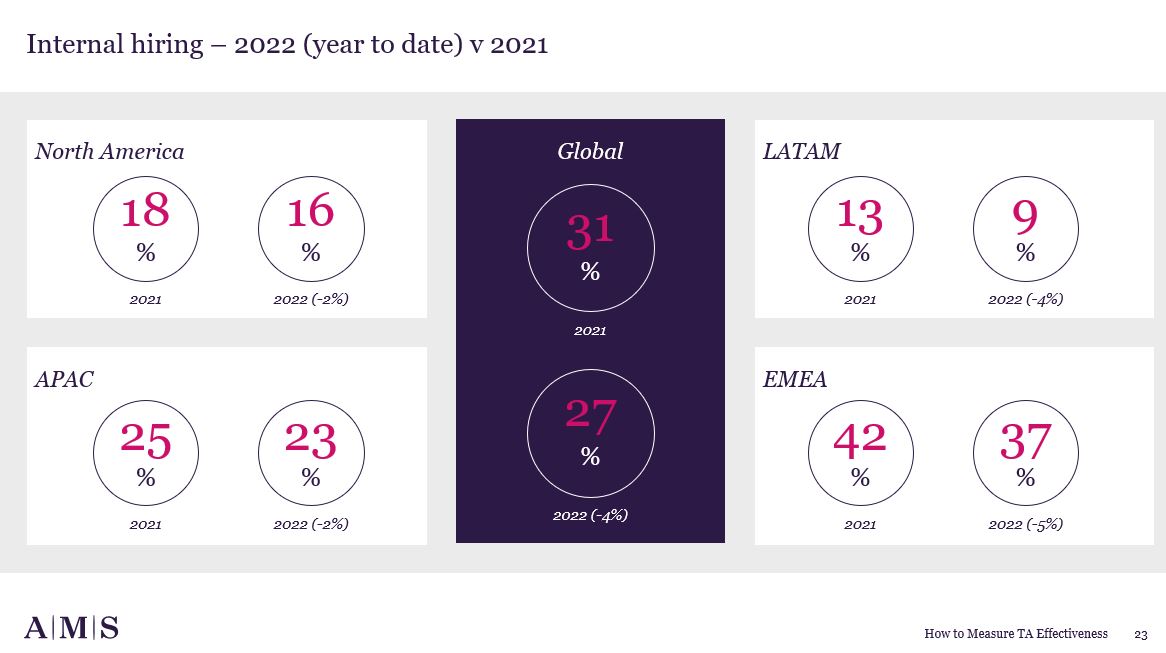This is a further article expanding upon the insight that I presented at the LEAP TA Life Sciences conference in Boston a few weeks ago where I was proud to present alongside many Talent Acquisition (TA) leaders within the pharmaceutical and life sciences sector. The big reveal in that presentation was the new research that we have conducted in AMS demonstrating that the US Life Sciences sector will see over 1 in 3 jobs vacant by 2030 unless we start to take bold new approaches to hiring and retaining talent. You can read more on that topic here.
As I shared in my last article, the key driver behind our ongoing talent shortages is the high rate of staff turnover impacting all sectors and all geographies. We all know that attrition was particularly high in 2021, few will dispute the reality of the Great Resignation even if they are sick of the term, but evidence shows that attrition has been rising year on year for the last two decades. And that shouldn't be a surprised given that the notion of a 'job for life' seems to be hugely outdated. With inflation now rampant and workers seeking increased salaries to offset the increased cost of living it's clear that staff turnover will continue to be high for some time to come.
So we need to do a much better job of retaining our existing and highly valuable talent. And in order to do that we need to develop and progress our talent within our organizations. New research just published by LinkedIn (see the link at the bottom of this article) shows that employees who have moved internally (through a promotion or lateral change) have a 64% chance of remaining with an organization after three years compared to 45% for those who have not moved internally.
So how are companies faring when it comes to internal hiring? And given the tough labor market that we're all facing, are we seeing an increase in internal hiring this year compared to last?
Within AMS we will support our enterprise RPO clients to make more than 240,000 permanent hires this year, across 7 key sectors and in more than 90 countries around the world. That level of hiring activity gives us rich data and real insight in to key hiring trends at a sector and regional level.
The chart below demonstrates how internal hiring, measured as a % of all hires made, has changed from 2021 to this year (January through July 2022):

Given that most sectors and geographies are facing significant talent shortages I'm sure many will be surprised that internal hiring has reduced over prior year. I would suggest that there are a couple of key factors driving this reduction.
Firstly, as I have written about before, most organizations are failing to make it easy for employees to find new internal roles. Only 40% of employees believe it's easy to find internal opportunities and only 17% felt that their organization encouraged them to move internally. And the key statistic - only a third of employees who searched for a new opportunity in the past 12 months searched internally first.
Secondly, employee and candidate priorities are changing. According to the same LinkedIn report I referenced before, workers confidence to improve their financial situation is declining and, on top of that, remuneration and benefits are the top priorities for candidates. With high inflation and cost of living, it's little surprise that talent is moving towards roles that offer the greater reward and, unfortunately, it's often the case that external roles will offer a greater increase than internal ones.
So how does internal hiring differ by sector? As the chart below demonstrates, there are significant variances in internal hiring levels between both sectors and regions.

Please bear in mind that the average internal hiring rate shown above will be influenced by the mix of hiring that AMS performs for clients within regions and sectors. However the data provides some fascinating insights. It won't be a surprise to see that internal hiring is particularly low for sectors such as Retail & Consumer - a sector in which the large majority of hiring will be made at entry level. More surprising perhaps to see the significant variances in internal hiring between regions. Whilst Retail Banking, for example, has internal hiring rates of 52% in EMEA and 41% in APAC, internal hiring rates in the US are running at just 22%. Indicative perhaps of a lower job level of hiring for retail banking in the US.
I know Talent leaders are always keen for data that helps them compare their hiring metrics to other organizations and I'm sure they will find this data useful. My plea though is for leaders to focus less on the numbers and more on the trend - whether your internal hiring is running at 10% or 30% there is an imperative to continually increase our levels of internal mobility and internal hiring. Doing so will reduce employee turnover and increase value to your business.
We need to transform the way that we approach internal mobility; we need to make it easy for employees to identify and apply for new internal roles, whether they are promotions or lateral moves. We should invest in technology to facilitate the processes, we should empower internal recruiters to better support, we should incentivize managers to progress rather than hoard their existing talent.
These are the challenges that we thrive on in AMS, if you would like to discuss how best to optimize your internal hiring, please reach out to us for a discussion.
As always, if you would like to be notified when future articles are published, please click the 'subscribe' button above to receive a link in your inbox.

/Passle/61f3d6ce0c51c313c0938277/SearchServiceImages/2025-01-02-09-47-19-044-677660a7640fb9c592204baf.jpg)
/Passle/61f3d6ce0c51c313c0938277/MediaLibrary/Images/2025-04-14-11-50-15-303-67fcf677ce15fc6c97ffb990.png)
/Passle/61f3d6ce0c51c313c0938277/MediaLibrary/Images/2025-04-11-14-18-45-886-67f924c55b0bb6ebfc08c4cd.png)
/Passle/61f3d6ce0c51c313c0938277/MediaLibrary/Images/2025-04-07-09-40-10-787-67f39d7a68569d31a045554b.png)
/Passle/61f3d6ce0c51c313c0938277/MediaLibrary/Images/2025-04-08-14-48-12-485-67f5372cbf5267822fdd60e3.png)